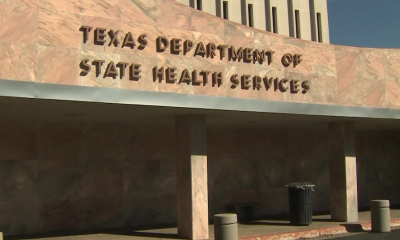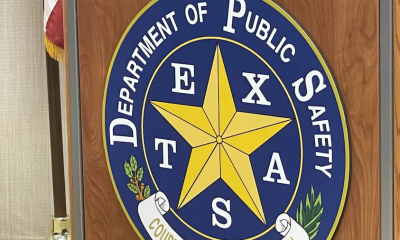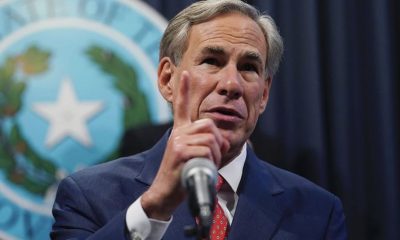Texas
Texas leads U.S. in weather disasters. Biden’s infrastructure plan includes $50B for resilience.
TX — President Joe Biden’s infrastructure plan includes $50 billion to fortify states against future extreme weather events such as the droughts, floods and hurricanes that caused up to $200 billion in damage in Texas over the past decade — a tally that includes six droughts, five hurricane landfalls and five floods that each left at least $1 billion in damage behind.
Texas was hammered by 67 major weather disasters from 2010 to 2020, more than any other state in the nation, according to the National Oceanic and Atmospheric Administration.
Fifty-nine of those were billion-dollar disasters — more than double the 25 costly storms the state saw in the decade prior as major weather events have become increasingly common.
The NOAA data does not include the deadly winter storm that killed nearly 200 Texans and caused billions in damage. The state was bracing for more severe weather on Monday with Gov. Greg Abbott ordering rescue boats, helicopters and other resources to stand at the ready for spring storms expected to bring heavy winds and hail.
The storm damage figures are a key piece of the White House’s efforts to sell Biden’s $2 trillion infrastructure proposal, which administration officials stepped up on Monday as they released breakdowns of needs in each state.
Transportation Secretary Pete Buttigieg pointed to the winter storms that left millions of Texans without power for days as an example of the need to make infrastructure more resilient to increasingly severe weather.
“We saw what happened in Texas — and that’s an example of a resilience problem,” Buttigieg said. “It’s not a fundamental technology problem. Natural gas plants were part of what failed not because they couldn’t conceivably work, but because there wasn’t weatherization … Things like wind power can operate in sub-zero conditions — I’ve seen it myself in Iowa — but only if you build it in a resilient way, which was not necessarily the case in Texas.”
But Republicans say the massive spending package directs too little to infrastructure projects, accusing the administration of “deception” in its campaign for the package that includes boosting clean energy and the electrical vehicle market, paying for elderly care and more while raising taxes on corporations.
“We are going to fight tooth and nail,” U.S. Sen. Ted Cruz, a Texas Republican, said in a recent radio interview. “If any private citizen put something out like this you’d be prosecuted for deceptive marketing.”
In Texas, the Biden administration says the plan could help fix more than 800 bridges and over 19,400 miles of highway in poor condition, expand broadband to the estimated 12 percent of Texans who live in areas without access to it and increase affordable housing options for more than 1.7 million renters in Texas are who spend more than 30 percent of their income on rent, among other things.
It’s the most detail the administration has offered so far on what Biden’s proposal could send to Texas — and could be as much detail as the White House will offer until the plan becomes law. The administration has said its goal is to establish competitive grant programs to dole out much of the funding, meaning Texas and its cities and counties would have to make their case for projects.
The plan is likely to change, as well, as Democrats push it through Congress. Lawmakers are returning to Washington this week with infrastructure at the top of the party’s to-do list. House Speaker Nancy Pelosi has said she wants to pass the bill by July 4 and the legislation still needs to clear key committees.
There is still much to be sorted out, as even some Democrats have voiced opposition to the corporate tax hikes Biden is proposing.
“It’s all open to negotiation,” White House Press Secretary Jen Psaki said on Monday. “The president doesn’t feel that we should pay for this package on the backs of the American people, but he’s certainly eager to hear ideas from Democrats and Republicans on alternatives.”
Still, Democrats are optimistic they’ll be able to pass an infrastructure package with or without Republican support as they plan use a budget maneuver that allows for bills to pass the Senate on a simple majority vote.
One Texas project — the Ike Dike, an estimated $26 billion coastal barrier that would fundamentally alter the southeast Texas coastline to protect against storm surges — could fit the bill for the $50 billion in funding Biden is proposing to guard against storms.
If the package does become a reality, the competition for funding may be steep.
“The U.S. has experienced well over $1 trillion in costs from extreme weather and climate events since Hurricane Ike hit Texas in 2008,” said Adam Smith, who tracks major weather disasters for NOAA. “Building more resilient infrastructure is a smart investment given the increasingly destructive and costly extremes that most all of the country faced over the last decade.”
But no other state saw has seen nearly as many major weather disasters as Texas, and the state has seen the highest frequency and highest total cost of major disasters going back to 1980, according to NOAA.
“Texas is located in an area of the United States that experiences all types of extreme weather,” Smith said. “Floods, droughts, hurricanes, heat waves, cold waves, winter storms, tornadoes, hail and more all happen in Texas.”










